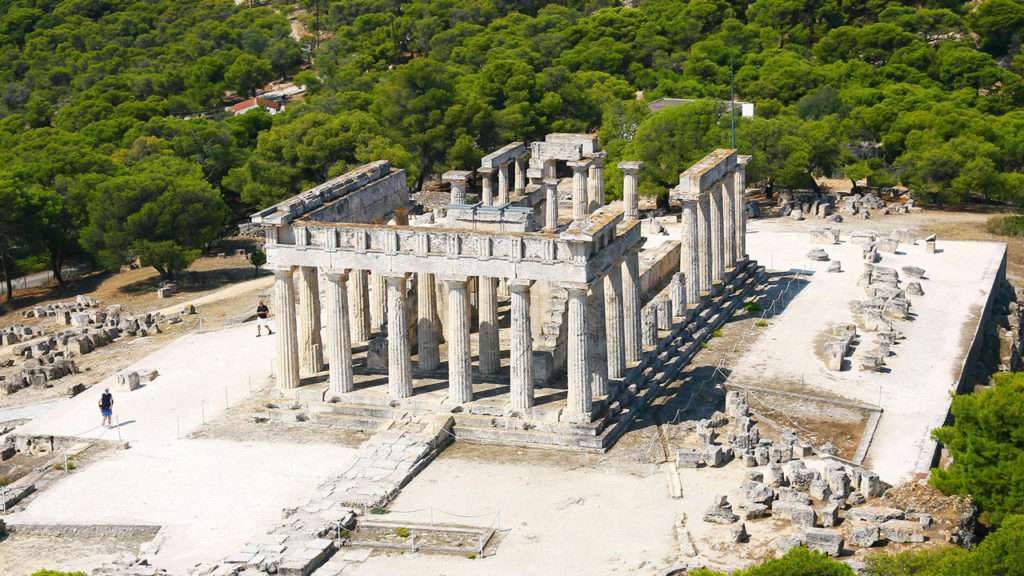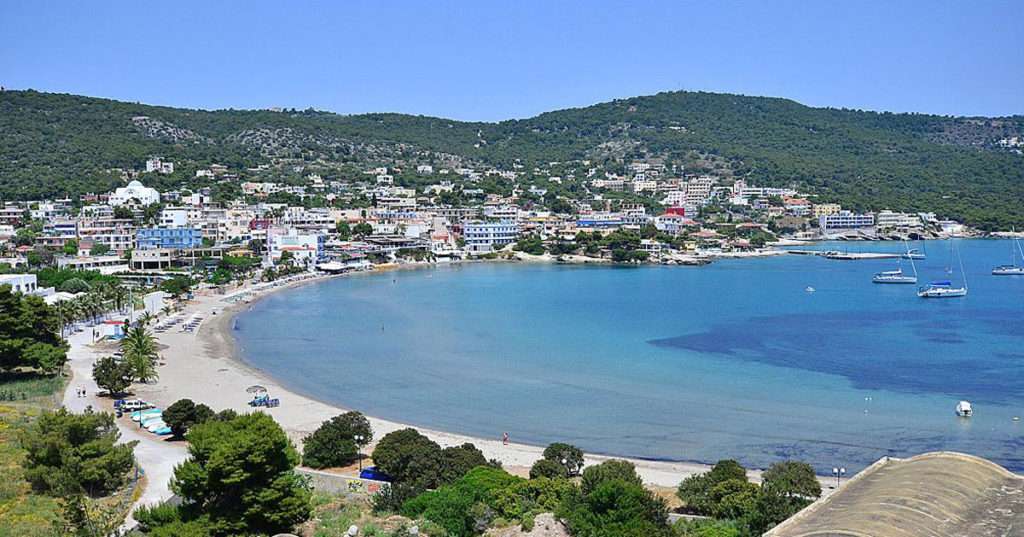Aegina, being one of the closest islands to Athens, is the perfect place for a quick getaway giving you the chance to experience a slice of Greek Island life. The island is only about an hour and fifteen minutes from Pireaus on a regular ferry and half that on a flying dolphin. Thus, a day trip is an easy and popular option to enjoy Aegina’s historical sites, lovely villages, and crystal beaches. The small size of the island makes it easy to drive around even in one day and discover the main spots, such as Aegina Town, the ancient Temple of Athena Aphaia, located in the center of the island, the ghost town of Paleochora that remains uninhabited today, Perdika, and Agia Marina.
Arriving at the port, the church of Agios Nikolaos, protector of the sailors, welcomes the visitors, while the Neoclassical seaside houses around create a charming atmosphere. The waterfront is full of fish taverns, restaurants, gift shops, and small kiosks selling pistachio nuts, a local delicacy while close to the ferry quay, there are horse carriages for rides around the town. If you walk around the center of the town, you will see the Tower of Markellos, a building constructed in the 17th century, functioning as a watchtower and named by its owner, a distinguished fighter of the Greek War of Independence. After Greece became a free state, Aegina was declared the newly founded country’s capital, and the tower of Markellos was turned into the residence of Governor Ioannis Kapodistrias from 1828 to 1829, and later on, it hosted the State Treasury.
Leaving the port, our first stop will be at the Saint Nectarios Monastery, the island’s patron saint, which is only 6kms away. Saint Nektarios is one of the most widely known Greek Orthodox Saints, and every year thousands of people from all Greece come to Aegina to visit his tomb for healing reasons, pray to him, or ask for his blessings. He was known as a great miracle worker, particularly as a healer of every sort of disease. He was also a writer, theologist, philosopher, moralist, educator, poet, ascetic, and mystic. The Monastery, one of the largest in the Balkans, was built between 1904-1910 by him, who lived here and died in 1920, and in 1961 he was declared a Saint.

Leaving the Monastery in about 15 min, we arrive at the temple of Athena. The Doric Temple of Aphea Athena is located within a sanctuary complex dedicated to the goddess and it is the most important monument on the island. The extant temple of c. 500 BC was built over the remains of an earlier temple of c. 570 BC, which was destroyed by fire. The sanctuary formed an equilateral triangle with the Parthenon and the Temple of Poseidon at Sounion, the so-called “holy triangle” of antiquity. The most impressive part of the temple is its wonderful sculpted pediments, a large part of which is exhibited at the Glyptothek of Munich.
Paleohóra, the old capital of the island, was located on a high stony hill that offered natural protection from the pirate raids. It situated in an area between the monastery and the temple of Athena, and it can be seen from a distance, it’s not very easy to climb. This site is known as the “Island Mystras” because it once had 565 churches, 28 out of which (with exceptional wall paintings) have withstood the ravages of time, just like the ruins of a medieval castle and two monasteries.
Agia (Santa) Marina is a well-known and favorite summer destination for Greek and foreign tourists. It has a big sandy beach, well organized with water sports available and the waters are not very deep. The beach is 500 meters long with many big pine trees a place where you can have a swim and lunch by the seaside. Depending on the time you want to spend in Aegina, after lunch we can either return to the port and walk around the city or we could drive to Perdika, a traditional fishing village on the other side of the island, about half an hour’s drive and return to the port from there.
The island of Aegina is famous for its pistachios, which some people believe are the best in the world. Their systematic cultivation was introduced in 1896 and soon became popular among the inhabitants displacing the rest of the agricultural cultivation. They are sold almost everywhere, in small shops and booths on the street.

